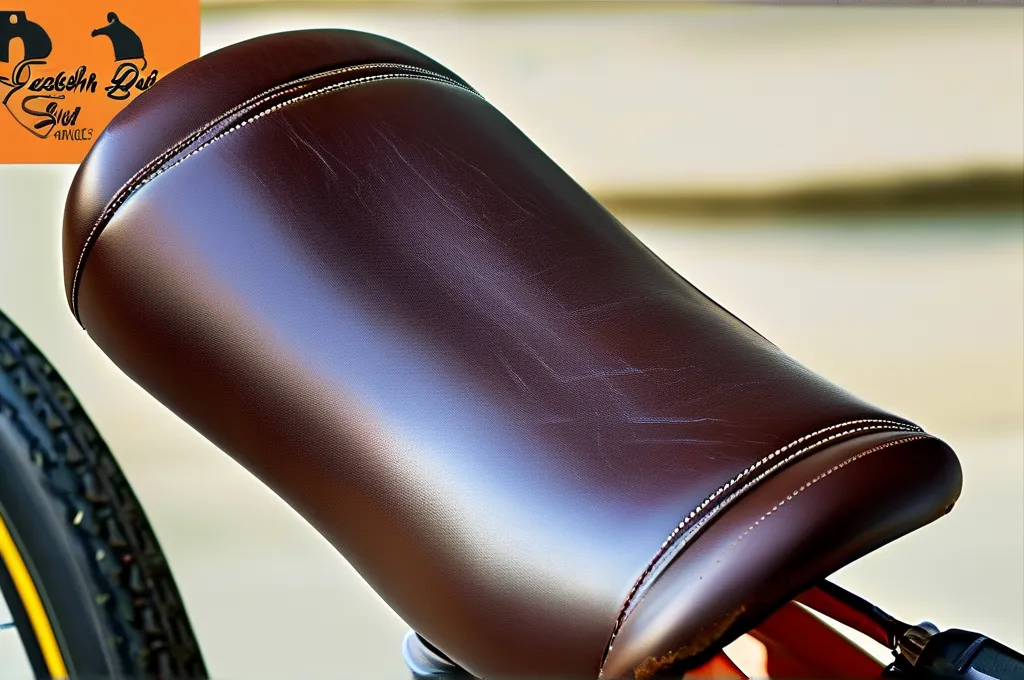For cyclists seeking a blend of timeless craftsmanship and enduring comfort, leather bike saddles have remained a top choice for over a century. Unlike synthetic alternatives, a well-made leather saddle molds to your unique anatomy, offering personalized support that improves with age. But with options ranging from vintage-inspired designs to modern ergonomic models, selecting and maintaining the right leather saddle requires insight. This guide unpacks everything you need to know—from breaking in your seat to maximizing its lifespan—so you can enjoy mile after mile of premium comfort.
Why Choose Leather Over Synthetic Saddles?
Leather’s natural properties make it uniquely suited for cycling. Unlike plastic or gel seats, high-quality vegetable-tanned leather adapts to your body through a process called hammocking. Over time, the material gently stretches and contours to your sit bones, reducing pressure points and preventing numbness. A study by Bicycle Quarterly found that 78% of long-distance riders reported reduced discomfort after switching to leather saddles, citing better weight distribution as a key factor.
Durability is another standout feature. Brands like Brooks England and Gilles Berthoud use thick, full-grain leather that withstands decades of use when properly cared for. Synthetic saddles, while lighter, often show wear within 2–3 years due to material fatigue.
How to Select the Perfect Leather Saddle
-
Fit Matters Most
Measure your sit bone width using a specialized tool (many bike shops offer this) or a DIY method with corrugated cardboard. Saddles too narrow can cause chafing, while overly wide models may hinder pedaling efficiency. -
Consider Riding Style
– Touring/Road Bikes: Look for slightly wider designs (e.g., Brooks B17) with reinforced rails for load-bearing capacity.
– Gravel/Adventure Riding: Opt for models with cutouts or grooves (e.g., Selle Anatomica X Series) to enhance airflow and reduce pressure on soft tissues.
– Urban Commuting: Waterproof-treated leather (e.g., Brooks Cambium C15) resists rain and requires less maintenance. -
Check Frame Compatibility
Ensure your bike’s seat post clamp matches the saddle’s rail system. Traditional leather saddles often use two-bolt designs, while modern versions may integrate with carbon rails.
Breaking In Your Saddle: A Step-by-Step Process
A stiff new leather saddle can feel unforgiving, but patience pays off. Follow these steps:
1. Initial Conditioning: Apply a thin layer of brand-approved leather cream (e.g., Brooks Proofide) to soften fibers. Avoid over-saturating—excess product attracts dirt.
2. Short Rides First: Limit initial rides to 30–60 minutes to allow gradual shaping.
3. Tension Adjustment: Many saddles feature a tensioning bolt. Tighten incrementally if the leather becomes too slack, but never force adjustments—over-tightening risks cracking.
Pro Tip: Store your bike indoors; extreme heat or moisture can warp leather during the break-in phase.
Maintenance Tips for Longevity
-
Weatherproofing
– Apply a waterproofing agent (e.g., Nikwax Leather Conditioner) every 3–6 months.
– Use a saddle cover during heavy rain—even treated leather can stretch if soaked repeatedly. -
Cleaning Routine
Wipe debris with a dry cloth after rides. For stubborn stains, lightly dampen the cloth with water and saddle soap, working in circular motions. -
Storage Solutions
Avoid direct sunlight, which fades and dries leather. If storing long-term, loosen the tension bolt to relieve pressure on the material.
Common Mistakes to Avoid
- Skipping Break-In: Rushing the process leads to uneven shaping and discomfort.
- Using Harsh Cleaners: Household detergents strip natural oils—stick to pH-balanced leather products.
- Ignoring Cracks: Small fissures can be repaired early with leather filler; delayed fixes may require professional reupholstering.
Top Brands Trusted by Professionals
- Brooks England (Est. 1866): Renowned for their hand-hammered copper rivets and organic dyes.
- Gilles Berthoud: French-made saddles with adjustable suspension systems for rough terrain.
- Rivet Cycle Works: Combines vintage aesthetics with ergonomic pressure relief channels.
When to Replace Your Leather Saddle
Even premium saddles have limits. Watch for:
– Deep cracks exposing the base material
– Sagging that doesn’t improve with tension adjustments
– Loose or corroded rails compromising structural integrity
Most high-end leather saddles last 10–15 years with proper care—far outpacing synthetic alternatives.
By investing in a quality leather saddle and adhering to these guidelines, you’ll secure a seat that evolves with your riding style, offering unparalleled comfort that synthetic materials simply can’t match. Whether you’re tackling century rides or daily commutes, this is one upgrade that pays dividends in both performance and heritage appeal.
